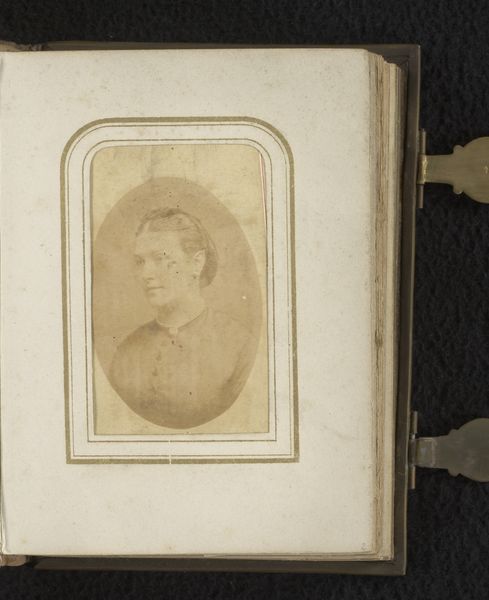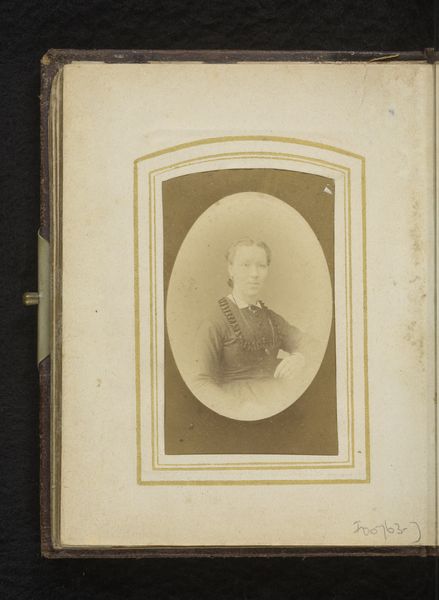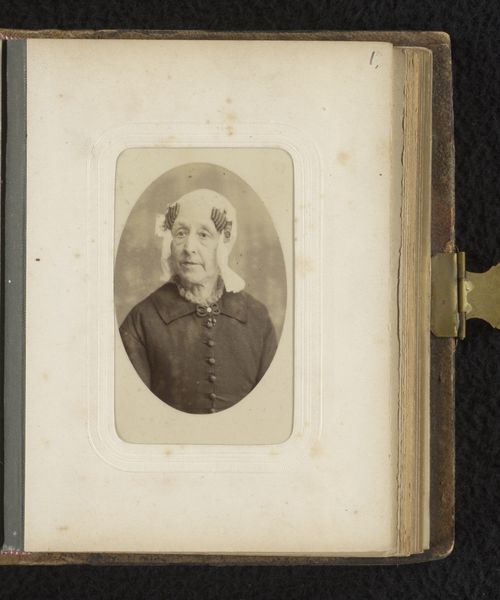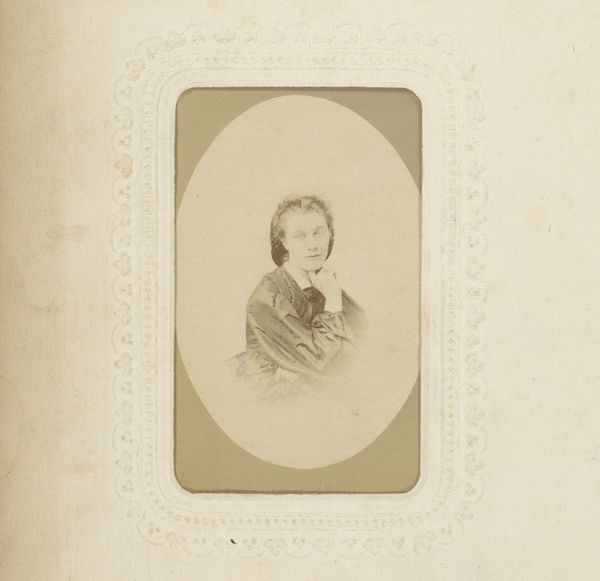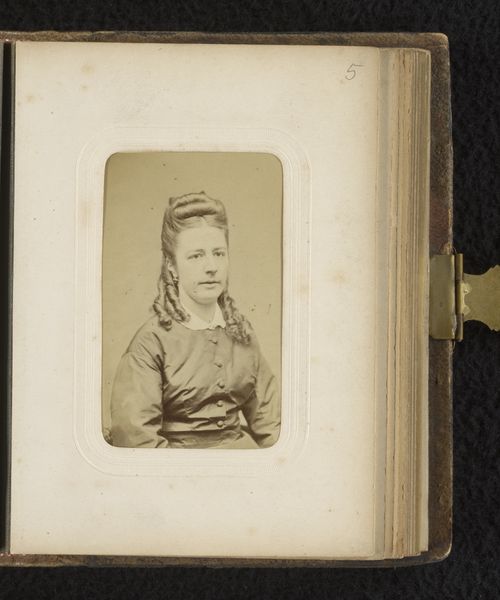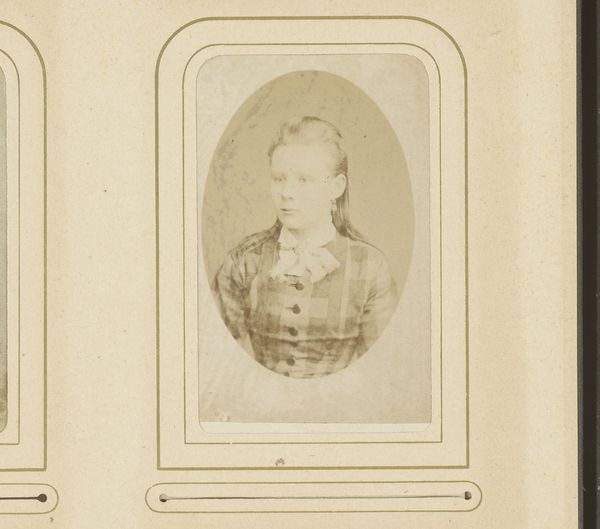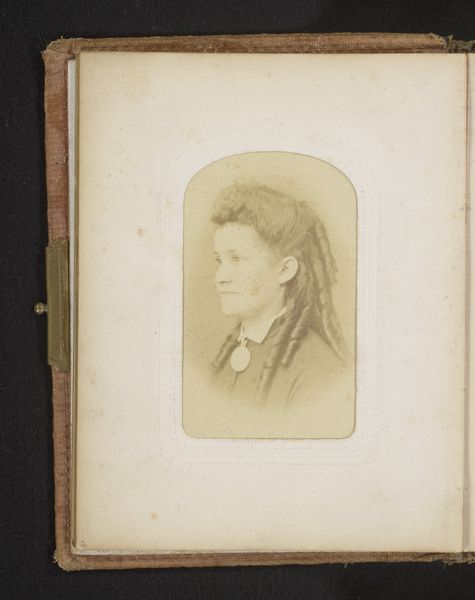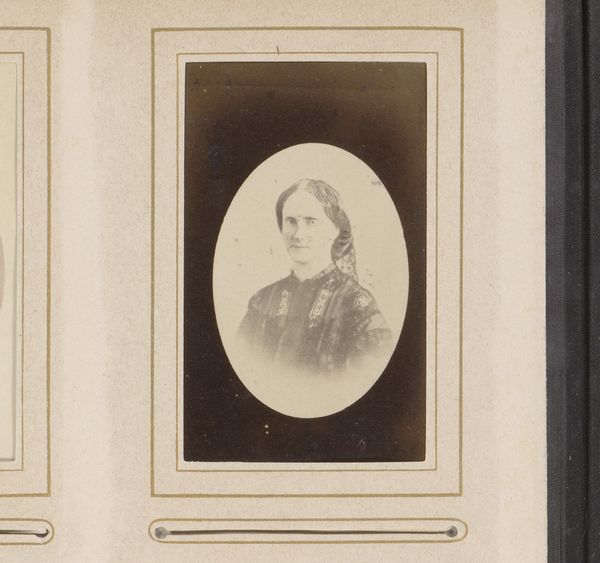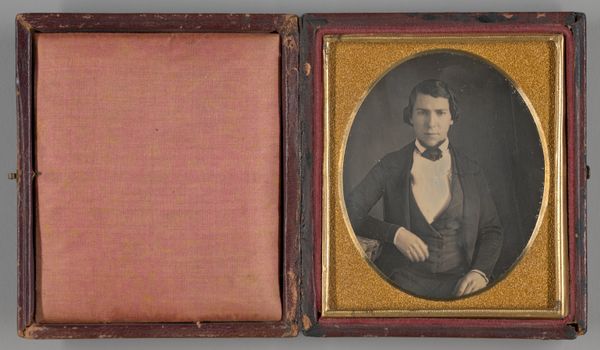
photography, albumen-print
#
portrait
#
water colours
#
pictorialism
#
photography
#
albumen-print
Dimensions: height 83 mm, width 52 mm
Copyright: Rijks Museum: Open Domain
This photograph of a woman was made by Albert Greiner, using a process called Albumen print, which was popular in the 19th century. This was achieved by coating paper with albumen, from egg whites, and then exposing it to light through a negative. The smooth, almost porcelain-like surface and sepia tone are characteristic of this technique. The production of albumen prints demanded a meticulous balance of science and craft. The preparation of the paper alone required skill, and the final image depended on carefully controlled exposure and development times. The rise of albumen printing coincided with the growth of commercial photography studios. It was tied to wider social issues of labor and consumption, and represents a moment when photographic portraiture became more accessible to a growing middle class. Considering the materials, making, and context of an artwork like this allows us to challenge traditional distinctions between fine art and craft.
Comments
No comments
Be the first to comment and join the conversation on the ultimate creative platform.
